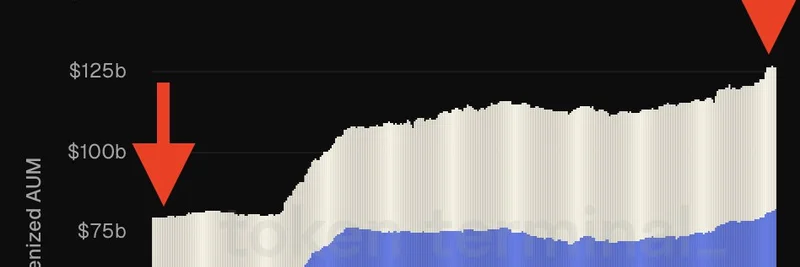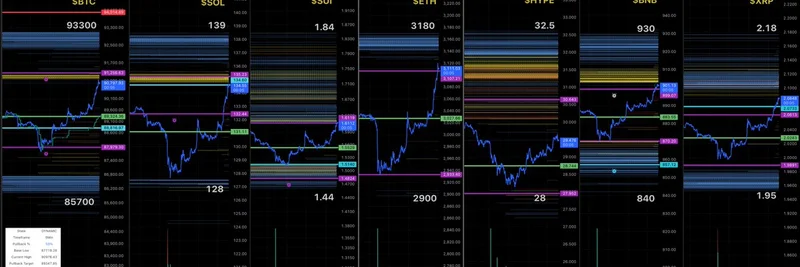If you've been keeping an eye on the crypto world, you've probably noticed the steady rise in stablecoin activity. A recent post from Token Terminal highlights a fascinating trend: Tether and Circle have pumped up the tokenized assets under management (AUM) on Ethereum by about $47 billion over the past year. That's no small change—it's a clear sign of growing confidence in the Ethereum ecosystem.
For those new to the term, tokenized AUM refers to the total value of assets that have been converted into digital tokens on the blockchain. In this case, it's mainly about stablecoins like Tether's USDT and Circle's USDC, which are pegged to the US dollar and used for everything from trading to lending in decentralized finance (DeFi). Think of it as the digital equivalent of cash reserves in traditional finance, but way more accessible and borderless.
Here's the chart shared in the tweet that breaks it down visually:
Looking at the graph, you can see the stacked areas for Tether (in blue) and Circle (in white) on Ethereum. Starting from around September 2024, the total AUM hovered near $75 billion, but by May 2025, it had climbed steadily, with some fluctuations, to over $125 billion. Those red arrows point to key moments, but the overall trajectory is upward, reflecting increased issuance and adoption of these stablecoins.
Why does this matter for meme token enthusiasts? Well, stablecoins are the lifeblood of trading on platforms like Uniswap or other Ethereum-based DEXes where many meme coins thrive. More USDT and USDC in circulation means more liquidity—easier buys, sells, and pumps for your favorite dog-themed or celebrity-backed tokens. It also signals broader institutional interest in crypto, which often trickles down to the wild world of memes, potentially sparking new bull runs or innovative projects.
Tether, the issuer of USDT, has long been a giant in the space, with its stablecoin used globally for remittances and trading. Circle's USDC, on the other hand, emphasizes regulatory compliance and transparency, appealing to more traditional finance players. Together, their growth on Ethereum underscores the network's dominance in DeFi, even as competitors like Solana or Base gain traction for meme token launches.
This surge isn't happening in a vacuum. With Ethereum's upgrades like Dencun reducing transaction costs, it's become more attractive for stablecoin issuers. Plus, as real-world assets (RWAs) get tokenized—think bonds or real estate on the blockchain—stablecoins play a crucial role in bridging fiat and crypto.
If you're a blockchain practitioner or meme token trader, keeping tabs on these metrics can give you an edge. More capitalized ecosystems often lead to higher volatility and opportunities in memes. For the latest on how this ties into emerging meme trends, stick around on Meme Insider—we're your go-to for decoding the chaos.
What do you think—will this liquidity boost ignite the next meme coin frenzy? Drop your thoughts in the comments below!


